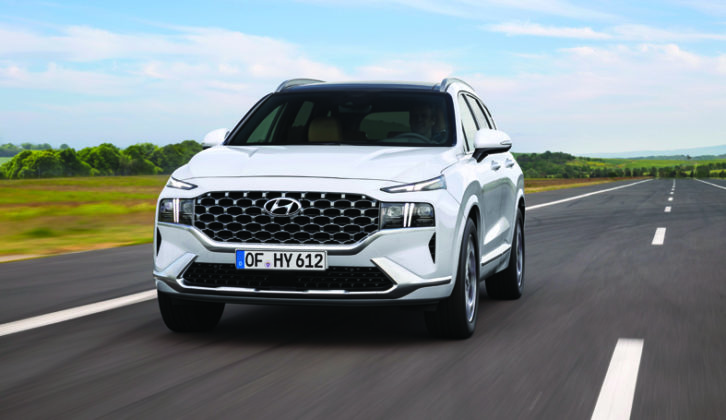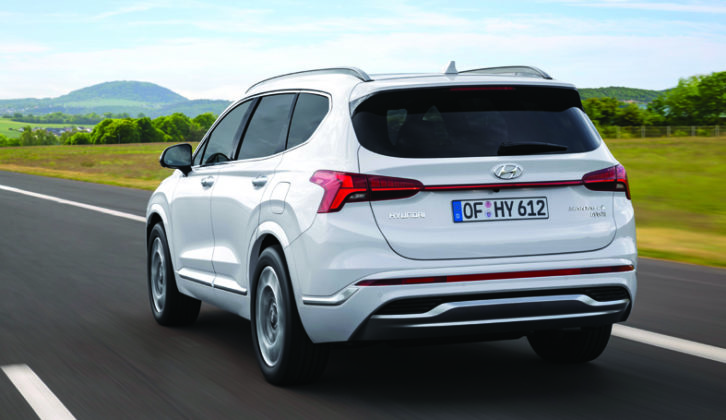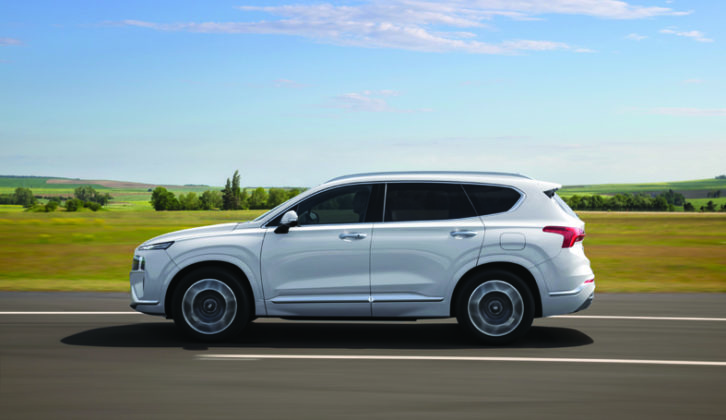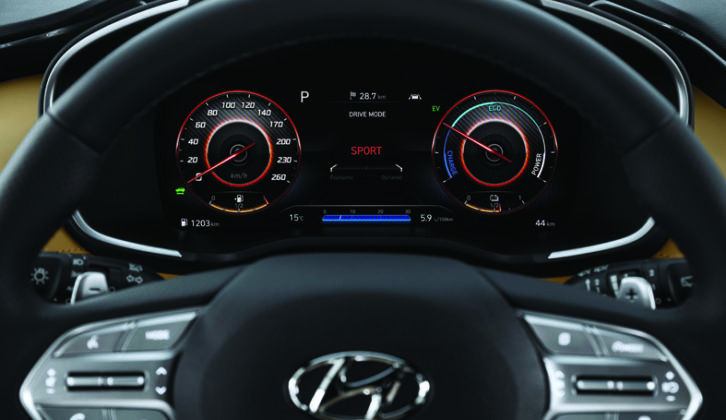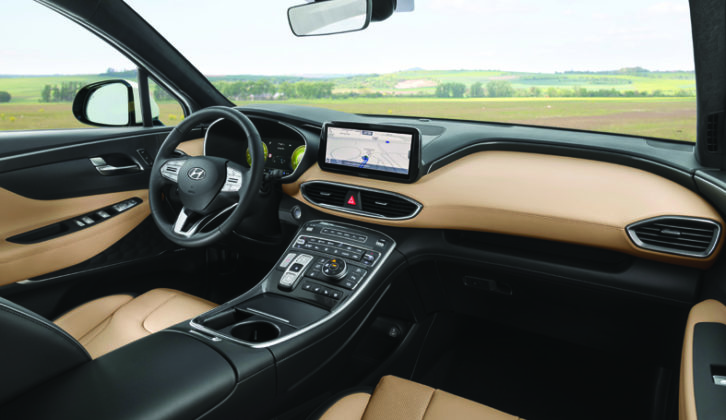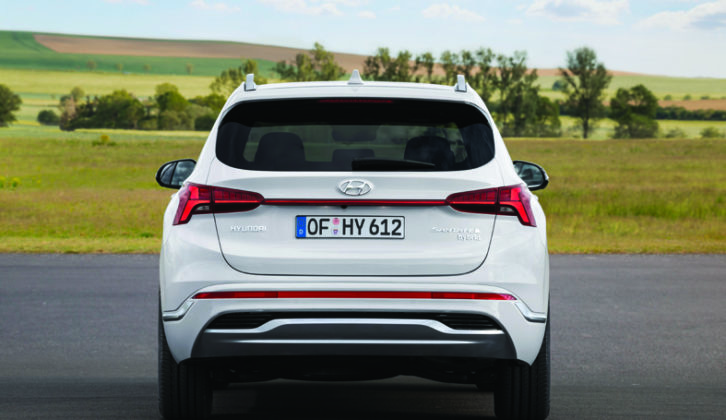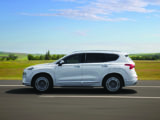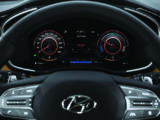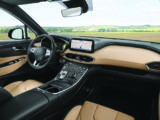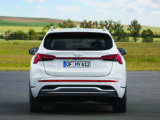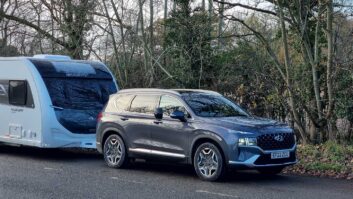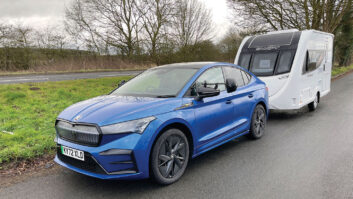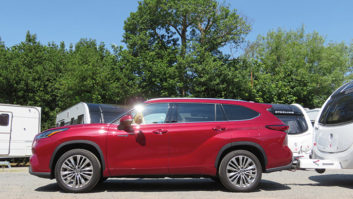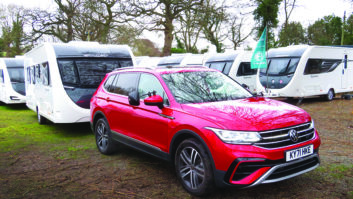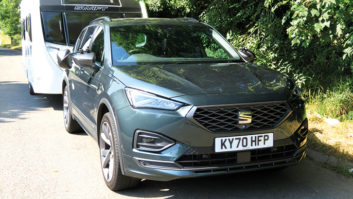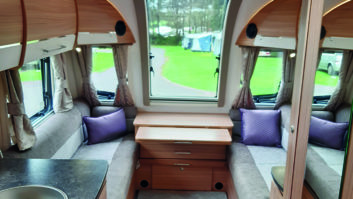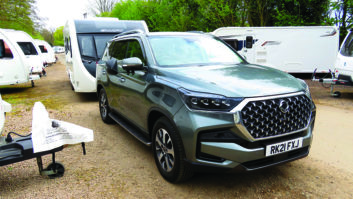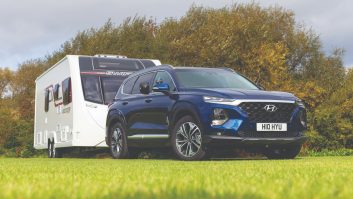The new Hyundai Santa Fe will be the first in its history to be brought to the market with hybrid and plug-in hybrid powertrains.
First appearing in 2001, the Santa Fe was originally a budget 4×4 vehicle, but successive generations have seen the car push upmarket and the new model will continue that trend.
Hyundai says the latest version will have a number of “premium updates” to tempt buyers away from similarly priced 4x4s with more prestigious badges.
New engines, new gearbox
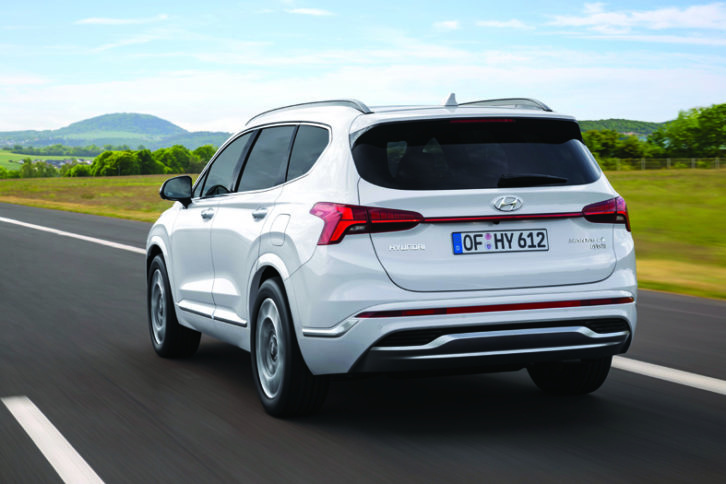
From launch, the Hyundai Santa Fe will be made available with two drivetrains. The 2.2-litre ‘Smartstream’ diesel is an update of the engine in the previous Santa Fe, and puts out 202hp and 325lb ft of torque.
No weights or towing limits have been made available as yet, but you can expect the new Santa Fe to be slightly lighter than the old one, which has a minimum kerbweight of 1890kg. That reduction in heft is partly due to the change from an iron engine block to an aluminium one, which has shaved off 19.5kg.
Some components have been refined to cut internal friction and improve efficiency, and fuel is now injected at 2200 bar rather than 2000 bar. The upshot of this is better economy and lower emissions, although Hyundai has not quantified the figures.
The Santa Fe’s other launch powertrain is the 1.6 T-GDi ‘Smartstream’ hybrid. This combines a turbocharged petrol engine with a 44.2kW electric motor drawing power from a 1.49kWh lithium-ion polymer battery. Taken together, these power sources produce 230hp and 258 lb ft of torque. So although the petrol-hybrid cannot match the pulling power of the diesel, it promises to be a solid powertrain for towing.
Early in 2021, these engines will be joined by the plug-in hybrid model. This uses the same 1.6-litre petrol, but a more powerful 66.9kW motor. It also has a bigger battery (13.8kW), so should travel much further, using electric power alone, than the regular hybrid.
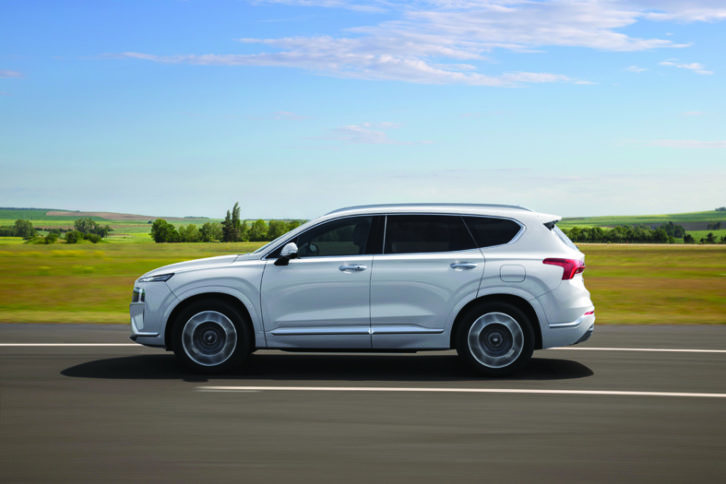
However, we do know what kind of gearbox each powertrain will be available with, and whether they are going to be two- or four-wheel drive.
The diesel uses an eight-speed wet double clutch automatic transmission, and buyers will choose between models sending power to two wheels or four. The new transmission makes the Santa Fe 3% more fuel-efficient than a conventional eight-speed automatic, Hyundai claims.
The hybrids have a regular six-speed automatic, but this is a new design, rather than a carryover from the old car. The regular hybrid is available as a two-wheel drive or a 4×4; the plug-in is 4×4-only.
Handling and safety
As well as an updated engine line-up, the Santa Fe is now built on a new platform. Hyundai has paid close attention to the air flow under the car, with a view to reducing the aerodynamic force underneath it. Heavy components sit lower than they do in the old model, lowering the centre of gravity. This should improve the vehicle’s stability, both in everyday driving and while towing.
Repositioned steering arms also promise more nimble handling for the car, while additional sound deadening should reduce noise and vibration levels.
Hyundai says the new platform is also safer, because it is better able to absorb impacts while minimising the deformation of the passenger space.
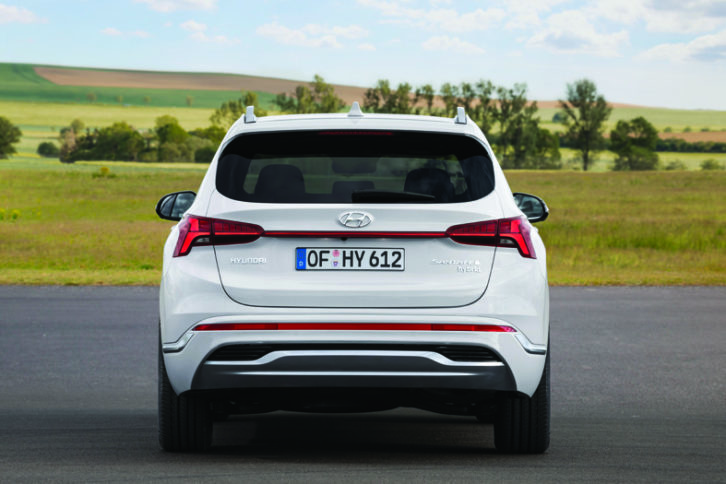
Safety is further improved by a seemingly never-ending list of high-tech driver aids, including Highway Driving Assist (HDA). This combines the functions of Hyundai’s Lane Following Assist and Smart Cruise Control. HDA can maintain a safe distance from the car in front and keep your vehicle centred in the lane, so long as the system detects lane markings on either side. Another new feature is Reverse Parking Collision-Avoidance Assist. This uses a rear-view camera and ultrasonic sensors to detect obstacles when reversing, providing a warning and applying the brakes if the driver doesn’t react to avoid collision.
Spacious interior
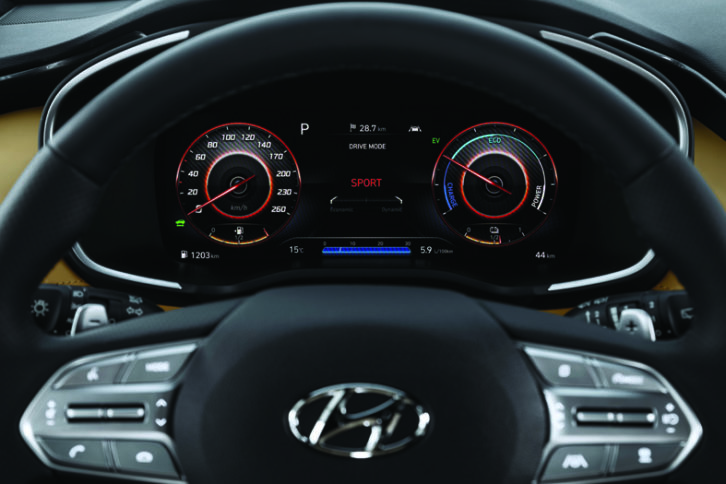
The new Santa Fe is longer (+15mm), wider (+10mm) and taller (+5mm) than before. Hyundai says this extra size has been put to good use to create a roomier and more inviting cabin, even while allowing enough space for the location of the battery and the motor in the hybrid models.
The battery sits beneath the passenger seat in the hybrid, and both the passenger and the driver’s seat in the plug-in hybrid, and Hyundai says these models have just as much space for people and luggage as the diesel version.
Compared with the previous Santa Fe, Hyundai also says the cabin offers 3cm of additional legroom for second row passengers, and up to 4cm of extra space in the third row of seven-seat versions.
Boot space is up to 571 litres in the seven-seat model, with the third row folded. Move the middle seats fully forwards on their runners and that increases to 782 litres. This compares well with the 700-litre capacity of the Volkswagen Tiguan Allspace with its second row all the way forwards.
Hyundai has also striven to give the new Santa Fe’s cabin a more upmarket look and feel, in a bid to tempt buyers away from the likes of the Audi Q5 and BMW X3.
Gadget fans are catered for with a voice recognition system, Apple CarPlay and Android Auto, a head-up display to project the vehicle’s speed and other important information in the driver’s line of sight, and a handy wireless charging pad for compatible smartphones.
Conclusion
We’ll know more about the new Santa Fe’s potential as a tow car when weights and towing limits have been confirmed. Until then, we can say that, so long as the weight-saving hasn’t compromised the Hyundai’s matching ratios too much, the new model’s lower centre of gravity should make this a better tow car. It’s pleasing to see Hyundai introduce hybrid versions while continuing to refine and develop the diesel model.
If you liked this… READ THESE:
If you’ve enjoyed reading this article, why not get the latest news, reviews and features delivered direct to your door or inbox every month. Take advantage of our brilliant Practical Caravan magazine SUBSCRIBERS’ OFFER and SIGN UP TO OUR NEWSLETTER for regular weekly updates on all things caravan related.
Gadget fans are well catered for with a voice recognition system, Apple CarPlay and Android Auto, a head-up display
